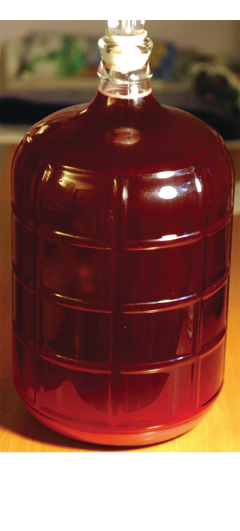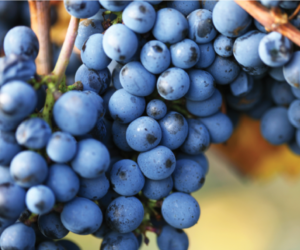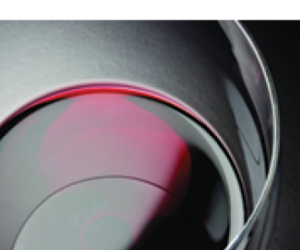 There is no denying: Sulfur dioxide (SO2) can be a source of headaches for winemakers — even without drinking any wine. Why does SO2 continue to be such a perplexing and confusing topic?
There is no denying: Sulfur dioxide (SO2) can be a source of headaches for winemakers — even without drinking any wine. Why does SO2 continue to be such a perplexing and confusing topic?
All too often I am asked to help out with problems that seem completely unrelated to sulfite additions, though these are at the root of many problems when not used correctly or at the wrong time in winemaking.
Much has been written about the role of SO2 as an antioxidative and antimicrobial agent in wine. Here, we will take a fresh look at the chemistry of SO2 and sulfites but with a focus on interactions between SO2 and other wine compounds and microorganisms, why and how they happen, and how you can use that information in your cellar.
SO2 refresher
SO2 in solution can exist in three forms as shown in the following equilibrium equation (hydrogen ions (H)+ have been omitted for the sake of simplicity). Molecular SO2 is usually shown as SO2•H2O to distinguish the aqueous form from its gas form, but we will use SO2 here. Note that the term sulfite is generally used to refer to all such forms, however, that can be confusing as each form behaves differently. We’ll use the terms in their correct sense to avoid any confusion.
The figure below shows that molecular SO2, sourced from, for example, potassium metabisulfite (KMS), exists in equilibrium with its bisulfite (HSO3)– and sulfite (SO3)2- ions in solution. The equilibrium is determined by the pKa values of SO2, bisulfite and sulfite ions, and the pH of the medium. pKa is a number similar to pH and refers to the point at which a compound dissociates into its ions and which exist in equal concentrations. This means that there are equal proportions of molecular SO2 and bisulfite ions at a pH of 1.81. In pure water (pH = 7.0), a solution contains roughly a 60:40 ratio of bisulfite to sulfite ions, and in wine where pH is in the 3.0–4.0 range, there is a high proportion of bisulfite ions with little SO2 and no sulfite ions. This is important as each equilibrium component behaves and reacts differently in solutions, particularly wine where there are many other compounds present.

The combined concentration of molecular SO2 and its ions is what makes up free SO2. We’ll see later how “sulfites” become bound to other compounds; when they do, the amount bound is what makes up bound SO2 and free SO2 is reduced by that amount. Once bound, SO2 no longer provides any protection. Total SO2 is the sum of free and bound SO2.
There is a lot of confusion as to which free SO2 component really affords protection to wine. Because of its chemical structure, molecular SO2 cannot react with other wine compounds, including dissolved oxygen; however, it is the only form that can penetrate the cell wall of yeasts and bacteria and disrupt their metabolism. Now we see why sulfites provide better protection at lower pH levels: Given the higher concentration of molecular SO2 at lower pH, there is a greater diffusion into cells.
Once inside the cells, where the pH is now much higher, nearing that of pure water, molecular SO2 dissociates into a high proportion of bisulfite ions and a relatively little sulfite ions. Both types of ions are capable of disrupting vital cell functions and reacting with other compounds inside cells and influence wine quality.
In wine (i.e. outside yeast and bacterial cells), bisulfite ions are the predominant and most reactive form having an affinity to bind to certain compounds that will influence wine chemistry. Let’s look at how SO2 works and interacts in each type of medium: yeasts, bacteria and wine.
SO2, yeasts and bacteria
As yeast breaks down and metabolizes sugar during alcoholic fermentation, it produces two important metabolites: Glycerol and acetaldehyde. Glycerol is a sugar alcohol that imparts sweetness. Acetaldehyde is usually associated with wine spoilage as a precursor to acetic acid; however, it is also the precursor to ethanol production during alcoholic fermentation. Small amounts of acetaldehyde are also secreted to give wine added complexity, but it can impart nutty, Sherry-like aromas at high levels if fermentation is not controlled properly.
Once SO2 has found its way into yeast cells and has dissociated, bisulfite ions start competing with any available dissolved oxygen (DO), where both scavenge free acetaldehyde given their affinity for this type of compound. This competition is usually not an issue as fermentation is predominantly an anaerobic process. Sulfite (SO3)2- ions can react with oxygen but there is so little concentration that any reaction is negligible.
The amount of binding between bisulfite ions and acetaldehyde with typical sulfite additions is not of concern; however, excessive additions can cause large amounts of acetaldehyde to become bound and impact ethanol production with yeast cells responding by generating more acetaldehyde. And when acetaldehyde becomes bound, the reaction cannot be reversed, and less is available to interact favorably with other wine compounds. Excessive sulfite also increases glycerol production, giving wine a tad too much sweetness and body.
Fortunately, most winemaking (S. cerevisiae) yeast strains used are fairly resistant to SO2 levels of up to 100 mg/L (ppm). S. cerevisiae yeasts also produce small amounts of sulfite — in the order of 10 mg/L — from their metabolism during alcoholic fermentation, and are able to assimilate other sources of sulfur to produce more sulfite and possibly sulfides, such as hydrogen sulfide (H2S), which imparts the dreaded rotten-egg smell. Under favorable conditions, yeasts can metabolize sulfites and sulfides that can react with naturally occurring sulfur amino acids to give rise to foul-smelling thiols (mercaptans) and thioacetates (esters of thiols).
Lactic acid bacteria (LAB) used in malolactic fermentation (MLF) are much more sensitive to SO2 — 10 mg/L is usually the maximum they can tolerate — and have shown to be sensitive to total SO2 with no free SO2. But acetic acid bacteria (AAB), the culprit in acetic spoilage, can thrive in high SO2 levels of up to 100 mg/L or more depending on the strain.
Acetaldehyde over-production can become a problem in wines that will go through MLF; LAB can degrade acetaldehyde into acetic acid and ethanol and cause undesirable levels of volatile acidity (VA). So it is imperative to sulfite wine immediately upon completion of malic conversion; use a paper chromatography kit to confirm MLF completion.
LAB also produce diacetyl, a highly desirable metabolite at low levels where buttery aromas and flavors are specifically desired. Diacetyl belongs to the same family of compounds as acetaldehyde, and therefore exhibits similar SO2-binding properties; excessive sulfite can therefore mask those aromas.
SO2 and wine
There are a few specific compounds in wine of interest in our study of SO2 impacts.
First, note that, in addition to molecular SO2, bisulfite ions cannot react with O2 and therefore antioxidative protection is not a result of ions and DO interacting. Protection stems from the affinity of bisulfite ions to bind with those same compounds that oxygen would otherwise oxidize. SO2 also deactivates polyphenoloxidase (PPO) enzymes responsible for oxidative browning in juice. As whites are more susceptible to such oxidation, juice should always be sulfited at crushing/pressing.
In red wine, anthocyanins — the color pigment molecules — are responsible for the red and purple colors. On their own, anthocyanins are unstable, particularly at high pH, causing considerable lightening right after fermentation and throughout aging. Color remains more intense and becomes more stable as anthocyanins bind with compatible compounds, or binders. Binders include acetaldehyde, keto acids (e.g. pyruvic acid) and volatile vinyl phenols secreted by S. cerevisiae yeast during fermentation and from spoilage yeasts. The sources and chemistry of these compounds are not all that important here except to say they provide binding opportunities to bisulfite ions although acetaldehyde is the major binder. Another source of acetaldehyde in wine is chemical oxidation of ethanol.
When anthocyanins react and bind with these compounds, they form anthocyanin complexes that have much greater color stability. However, bisulfite binding with acetaldehyde, keto acids and volatile vinyl phenols can prevent anthocyanin binding with those same compounds and therefore no longer improving color and color stability. This is referred to as the bleaching effect of SO2. It should be pointed out to those who ameliorate (add water to) wine for the purpose of reducing alcohol that water exhibits the same method of reaction as bisulfite, and so destabilizes color.
SO2 also increases tannin extraction during maceration/fermentation phases, therefore imparting additional astringency. The extra tannins now become a source of binders for anthocyanins; as the wine ages, the binding will cause the color to take on orange-like and brownish hues.
And SO2’s impacts extend beyond these color-affecting reactions. SO2 also reduces ester hydrolysis during aging and quite possibly mute some volatile aromas. Esters are volatile compounds responsible for all those wonderful aromas we find in wine; however, these are normally bound to other compounds and must be hydrolyzed, or cleaved, from their binders in order to become volatile and express their aromas.
Now let’s go back and look at the main source of SO2 and sulfite: potassium metabisulfite. This is the salt form used to add SO2 to wine. The molecular formula (K2S2O5) of this salt tells us that potassium (K)+ ions will inevitably be added to wine, causing increased tartrate, instability. K+ ions can cause potassium bitartrate (KHT) crystals to form if/when wine is subjected to cold temperatures, and so, wine must be chill-proofed prior to bottling.
Putting it all together
There are many factors to consider when adding SO2 to wine, and therein lies the winemaker’s challenge: How to reconcile the various effects of SO2 and the timing of sulfite additions with the needs to provide protection to wine while not inhibiting MLF.
Here are some general guidelines and tips:
1. Reduce the use of SO2 at the crusher to no more than 20–25 mg/L, particularly if the wine will be put through MLF.
2. Try and maintain a pH below 3.6, to the extent possible, to reduce risks of microbial spoilage.
3. Sulfite immediately after completion of MLF and maintain a nominal free SO2 level until bottling based on pH of the wine. Use WineMaker’s online Sulfite Calculator to calculate sulfite additions. For most wines, target a molecular SO2 level of 0.8 mg/L; reduce to 0.5 mg/L for reds; increase up to, but never more than, 2.0 mg/L for wines affected by microbial spoilage, e.g. wines made from grapes with extensive rot.
4. Add sulfite incrementally—it is better to add small amounts rather than in large dosage.
5. If you can smell SO2, bind (reduce) it by aerating the wine, e.g. vigorous racking.





